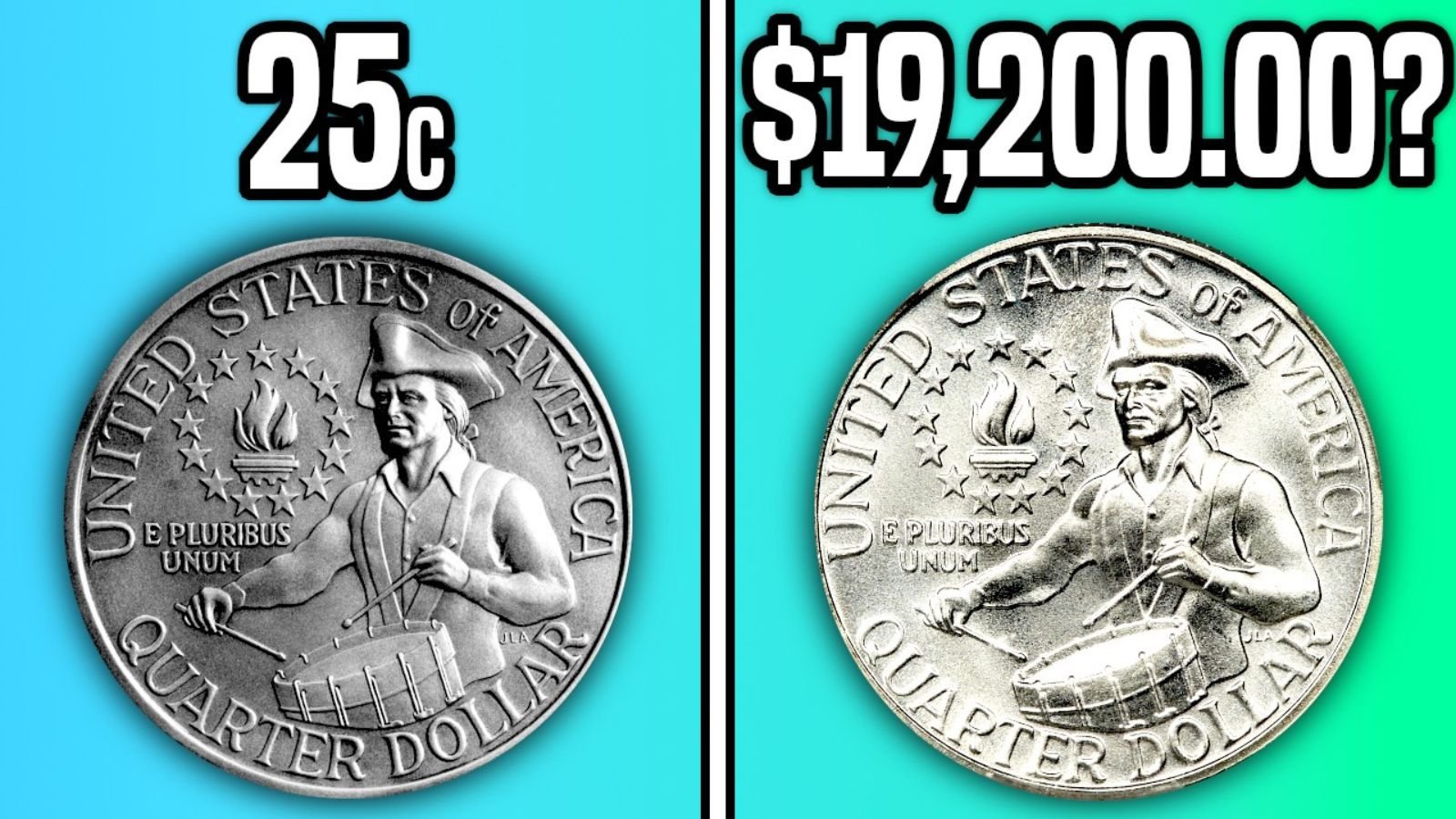For decades, the humble U.S. quarter has passed through countless hands, often overlooked for its artistic value and hidden potential. Among these, the Bicentennial Quarter, minted in 1975 and 1976 to commemorate the 200th anniversary of American independence, stands out — not only for its design but also for its potential to be worth thousands of dollars today.
While most Bicentennial Quarters are worth only their face value of 25 cents, rare and valuable variants have caught the attention of collectors, some reportedly selling for as much as $19,200.
Bicentennial Quarters: Historical Background
The Bicentennial Quarter was released as part of a special program by the U.S. Mint to mark 200 years of American independence. These coins featured a unique reverse design that departed from the traditional eagle motif. Instead, it showcased a colonial drummer and a ring of 13 stars, symbolizing the original colonies.
These quarters were struck with the dual date “1776–1976,” emphasizing the historical significance. They were minted in three locations:
- Philadelphia (no mint mark)
- Denver (D)
- San Francisco (S)
San Francisco also produced proof and silver-clad versions aimed at collectors.
What Makes a Bicentennial Quarter Valuable?
Although hundreds of millions of Bicentennial Quarters were produced — over 1.6 billion in total — only a few are worth more than face value. Here are the key factors that determine whether your quarter could be worth thousands:
1. Mint Errors
The most valuable Bicentennial Quarters often contain minting errors such as:
- Double Die Obverse (DDO): A doubling of the design elements (usually visible in the date or lettering).
- Off-Center Strikes: The design is not aligned properly with the coin’s blank.
- Wrong Planchet Errors: Struck on a planchet intended for another denomination or metal.
Such mint errors are rare, and collectors pay a premium for them. One quarter with a dramatic double die error reportedly fetched $19,200 at auction due to its rarity and pristine condition.
2. Silver Composition
Some Bicentennial Quarters were minted in 40% silver, primarily in collector sets from the San Francisco Mint. These silver-clad quarters are worth more based on their metal content and can fetch between $5 to $20 or more, depending on condition.
You can identify silver versions by checking the edge of the coin. If there is no visible copper layer, it’s likely silver-clad.
3. Proof Coins
San Francisco also released proof versions of the Bicentennial Quarter, characterized by their mirror-like finish and sharp details. Proof coins in pristine, uncirculated condition are sought after by collectors and can bring values ranging from $10 to over $50.
4. Graded and Slabbed Coins
If your Bicentennial Quarter is in excellent condition, consider having it professionally graded by services like PCGS or NGC. Coins graded MS-67 or higher (Mint State) can sell for several hundred dollars or more, depending on rarity and demand.
5. Circulated vs. Uncirculated
Circulated Bicentennial Quarters — those used in everyday commerce — usually hold minimal numismatic value. In contrast, uncirculated coins (especially those with no scratches, marks, or discoloration) command significantly higher prices.
The $19,200 Bicentennial Quarter
The $19,200 figure seen in the image refers to a rare, mint-error Bicentennial Quarter sold at auction. Though this value is not typical, it highlights the importance of checking your spare change — especially if you find a quarter with:
- A dramatic misstrike or off-center error
- Strong doubling in the date or lettering
- A silver edge and “S” mint mark
- Virtually no wear and tear
These factors, when combined, could catapult a 25-cent coin into the thousands.
How to Check If Your Bicentennial Quarter Is Valuable
Here are steps you can take:
- Inspect the coin’s edge — Look for a silver-colored edge with no copper visible.
- Check the mint mark — Coins with an “S” might be proof or silver-clad.
- Look for errors — Examine closely for doubling, off-center strikes, or planchet anomalies.
- Assess the condition — Uncirculated coins with no blemishes are more valuable.
- Get it graded — Professional grading can confirm condition and authenticity, which adds resale value.
Where to Sell a Valuable Bicentennial Quarter
If you think you have a valuable quarter:
- eBay – A common platform for collectors and sellers.
- Heritage Auctions or Stack’s Bowers – Premier auction houses for rare coins.
- Local coin shops or coin shows – Great for in-person evaluations and sales.
- Online numismatic forums – Can help gauge interest and potential value.
Final Thoughts
While most Bicentennial Quarters are still worth just 25 cents, some rare variants with minting errors, silver composition, or pristine condition can command staggering prices — even up to $19,200.
So, next time you receive change, don’t overlook that drummer boy quarter. You could be holding a tiny piece of American history — and maybe even a treasure.
Some Important Link
| Telegram Group | Click Here |
| WhatsApp Group | Click Here |
| Home Page | Click Here |










